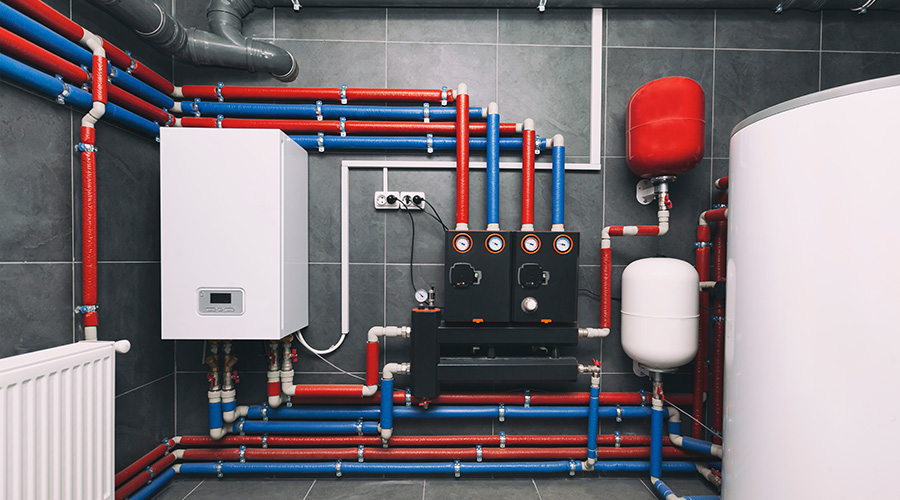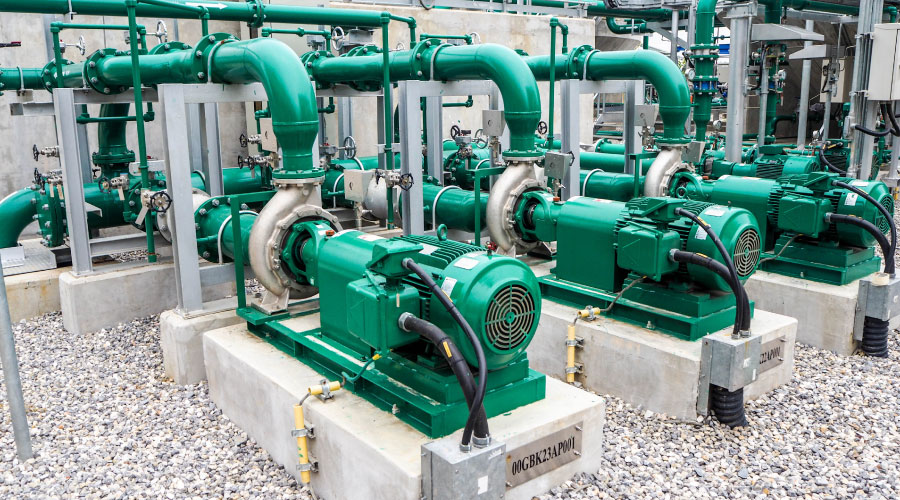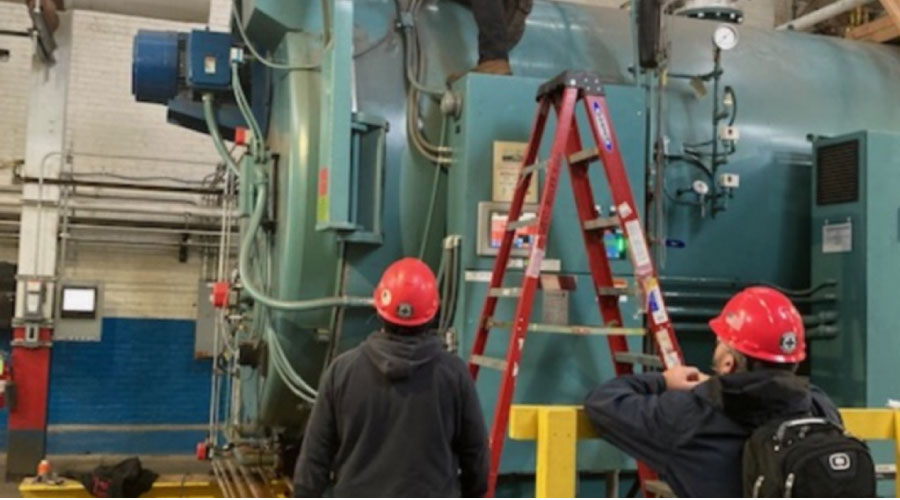Cooling On Demand
Managers� preparation and rapid response in a cooling crisis can control costs and keep facilities operating smoothly
Las Vegas temperatures can be unforgiving. They regularly approach or top 100 degrees. In such an environment, all types of buildings rely heavily on air conditioning to maintain comfortable work environments and protect valuable equipment. The loss of air conditioning can turn critical, however, when the facility in question is an elementary school full of students.
Several times each year, a building in the Clark County School District (CCSD) — which includes Las Vegas — loses air conditioning, and managers and technicians must act quickly to bring in temporary cooling equipment.
Maintenance and engineering managers in cooler areas of the country might not be able to empathize with emergency cooling issues facing Dick Cuppett, P.E., the district’s coordinator for mechanical and electrical systems. But all managers can identify with Cuppett’s take on the effects of these situations.
“When a school goes down, we lose money,” he says. “We lose that $33 per day per student that comes from the state.”
Events of the last few years — certainly led by 9/11 — have prompted managers to rethink their organizations’ contingency plans. From disaster preparedness through business continuity to recovery efforts, managers are developing strategies they can implement in a crisis. These preparations include drawing up lists of companies that can provide cooling on demand.
“More people want that list on their desks than five years ago,” says Don King, director of maintenance and operations consulting services for Kaiser Foundation hospitals.
The potential fallout from a cooling crisis raises the stakes for managers trying to plan for contingencies and protect facility operations. So whether the situation is a large special event or the loss of a chiller or electrical power, managers have begun to pay greater attention to their facilities’ planning and preparation to provide temporary cooling.
Determining Needs
Facilities increasingly contain areas and equipment that require the ability to maintain the area at a reliable and steady level of cooling. Computer rooms, clean rooms, operating rooms and procedure rooms all require space conditioning at predictable times. Computer rooms for wireless communications can contain hundreds of thousands of dollars worth of equipment. One failure of the area’s air conditioning system results in dire and costly problems for the organization.
Figuring out a facility’s cooling load involves understanding several factors, including heat produced by equipment, people and lights in a space, and heat coming through exterior walls, windows and the roof. Leading factors in this calculation are equipment and lighting, as well as large groups of people and uncovered or unshaded glass.
But managers also should avoid specifying cooling equipment that results in overcooling. A smaller cooling unit might not operate correctly if its capacity is much larger than the heat produced in the space, leading the unit to run in short cycles and generating higher levels of humidity. Also, larger units use more energy, produce higher operating costs and generally cost more to rent.
CCSD is building schools at a rapid pace, so Cuppett has a good idea of the cooling needs of each of the district’s schools. For example, most of the district’s high schools and middle schools have two chillers apiece. This redundancy means a school can get by with a backup chiller for a period of time before the situation becomes problematic. But many of the district's elementary schools have only one chiller, so in an emergency, they more often require outside assistance to stay cool.
In 2004, CCSD went through six instances in which a school required emergency cooling, Cuppett says. For example, one 45,000-square-foot elementary school lost cooling after a chiller pump failed. Within 24 hours, the district had brought in one of its trailer-mounted chillers — a 240-ton, air-cooled unit — and left it operating for two weeks while technicians repaired the chiller.
The cooling needs are much different for the Milwaukee Public Schools (MPS). Only 21 of the district’s 160 schools have air conditioning, says Richard Moore, the district’s director of maintenance and operations. The area’s cooler climate lightens the cooling load considerably, but like many facilities, Moore’s cooling challenges come from high-tech systems and equipment.
“We have had some short-term needs over the last couple of years,” he says. “It mainly had to do with rooms that housed a significant amount of computer equipment.
“At first, we thought that these rooms wouldn't need any additional cooling. After the equipment was installed and expanded upon, we needed to install cooling to those rooms. While the equipment was being ordered and the installation was under way, we used small self-contained units for cooling.”
Equipment Considerations
To provide on-demand cooling, managers have a range of equipment options, both from equipment manufacturers and rental companies. Relatively small, portable units can provide cooling for an equipment room or several offices or classrooms. Larger units — often delivering 250 tons of cooling or more — are mounted on semi trailers and moved to outside a building and tied into the building’s HVAC system.
CCSD has 10 trailer-mounted chillers, ranging from 75 tons up to 240 tons. The district also has about 20 smaller portable units that can cool eight to twelve classrooms, and it is in the process of buying 10 more such units, Cuppett says.
The district’s air-conditioning situation came to a head about three years ago, Cuppett says. In the midst of the school-building boom, the district began having recurring problems with new chillers installed in the schools. Realizing that contingencies were in order, the district began building an arsenal of cooling options that could be brought in on short notice.
In Milwaukee, Moore’s department rented one unit several years ago to address a temporary need. Since then the department has purchased six of the smaller portable units. But as the district moves to increased year-round use of its schools, the department will need additional units, he says.
For a first-hand account of one manager’s strategy for cooling on demand, see the accompanying article, “A ‘Beauty’ of a Cooling Strategy.”
Lessons Learned
The process of determining cooling needs and researching equipment options for a variety of facilities can be arduous, and bumps in the road are inevitable. For these reasons, managers recommend a proactive approach that enables them to avoid problems when the heat is on — literally.
For example, managers using small cooling units should check to see whether the area to be cooled has a floor drain, Moore says. If not, a technician needs to check and empty its water tank regularly to prevent the unit from filling up and shutting off, especially over a long weekend.
Larger units create larger challenges.
“Make sure you have enough hoses for the connections into the building,” Cuppett says, referring to large trailer-mounted units. “You need to match what’s on the school.” For water-cooled units, that means taps for condensers and chilled water, and for air-cooled units, it means taps for condensers. CCSD has written requirements for these connections into specifications for newly constructed schools.
“We did that so we don’t have to go back them and cut them in after the fact,” he says.
In some cases, managers might need to consider an even bigger picture than just rooms or building wings.
“Be very careful about how you plan for new facilities,” King says. He adds that facilities that have suffered air-conditioning losses at critical times understandably tend to overcompensate when it comes to new buildings. They want to ensure that they have either enough capacity or adequate system control to address short-term cooling needs. King advises careful consideration.
“There has to be a balance between redundancy and the equipment needed to reroute cooling as needed,” King says.
In the end, managers also will need to strike a balance in developing their organization’s overall strategy for on-demand cooling. Investing too heavily in big-ticket cooling equipment is apt to create budget problems down the road, while failing to plan properly for crisis contingencies seems certain to create more “heat” for managers than the original crisis.
A ‘Beauty’ of a Cooling Strategy
Technology advances often enable managers to address multiple challenges at the same time, such as improving energy efficiency and meeting the on-demand cooling needs of critical facility operations.
Edward Dudek, director of engineering at the University of Pittsburgh Medical Center (UPMC), describes his department's strategy for matching on-demand-cooling equipment options with specific facility issues:
“A few years ago, we decommissioned two 1,000-ton, gas-fired absorption chillers. Initially, they were installed to provide some capacity for a facility under emergency power. We were also able to provide heat to one of our larger research facilities from these units.
“As a replacement, we installed a new dedicated diesel generator and a 2,500-ton, dual-compressor chiller. Also as a part of the project, we installed a back-up, gas-fired boiler to provide for the loss of the emergency back-up to steam that lost when the absorption chillers were removed.
“The beauty of the generator-chiller combination that we have now is that it can be put on line within 15 minutes. The absorption chillers were a cumbersome operation, leading to our need to base-load with them, since it took hours to start in emergencies.
“The nature of our research facilities and the hospital don't allow for that amount of time to pass without cooling in extreme weather. We're one of the largest transplant centers in the country and have a demand for cooling at any time. The equipment heat load in an operating room is enormous.
“Now, we’re able to utilize our building automation systems to direct the available cooling to the specific air handlers that we need most through a predetermined program. Out technicians then can distribute any excess capacity from our command center.
“We’re working on similar projects for other UPMC hospitals, as well. The recent power grid failure in the northeast seems to provide enough motivation for such projects.”
|
Related Topics:











